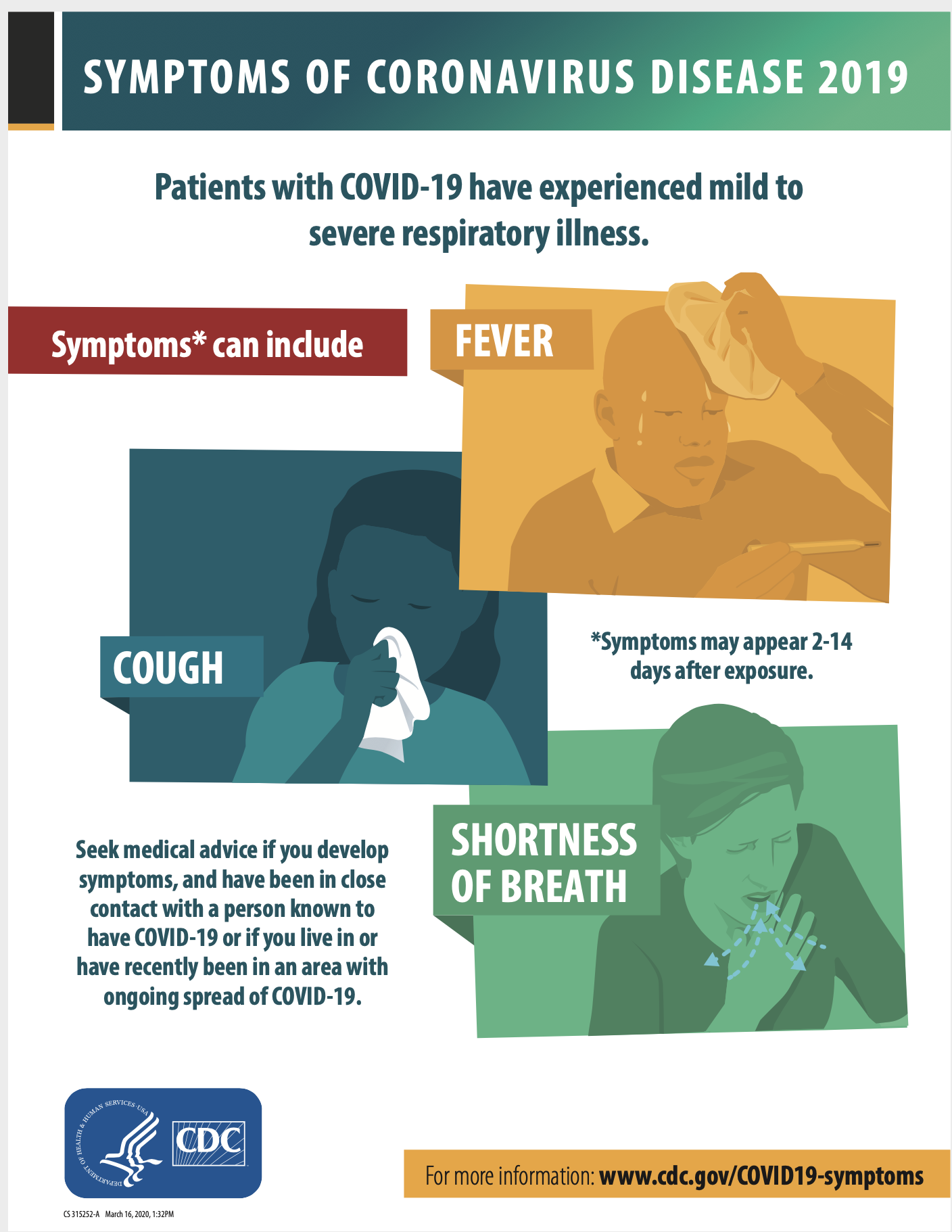Tag: COVID-19
Zoom Group Meeting November 24, 2020
November 24, 2020 4:40 pm
 Link to CDC website.
What is PCR – Polymerase Chain Reaction:
Link to CDC website.
What is PCR – Polymerase Chain Reaction: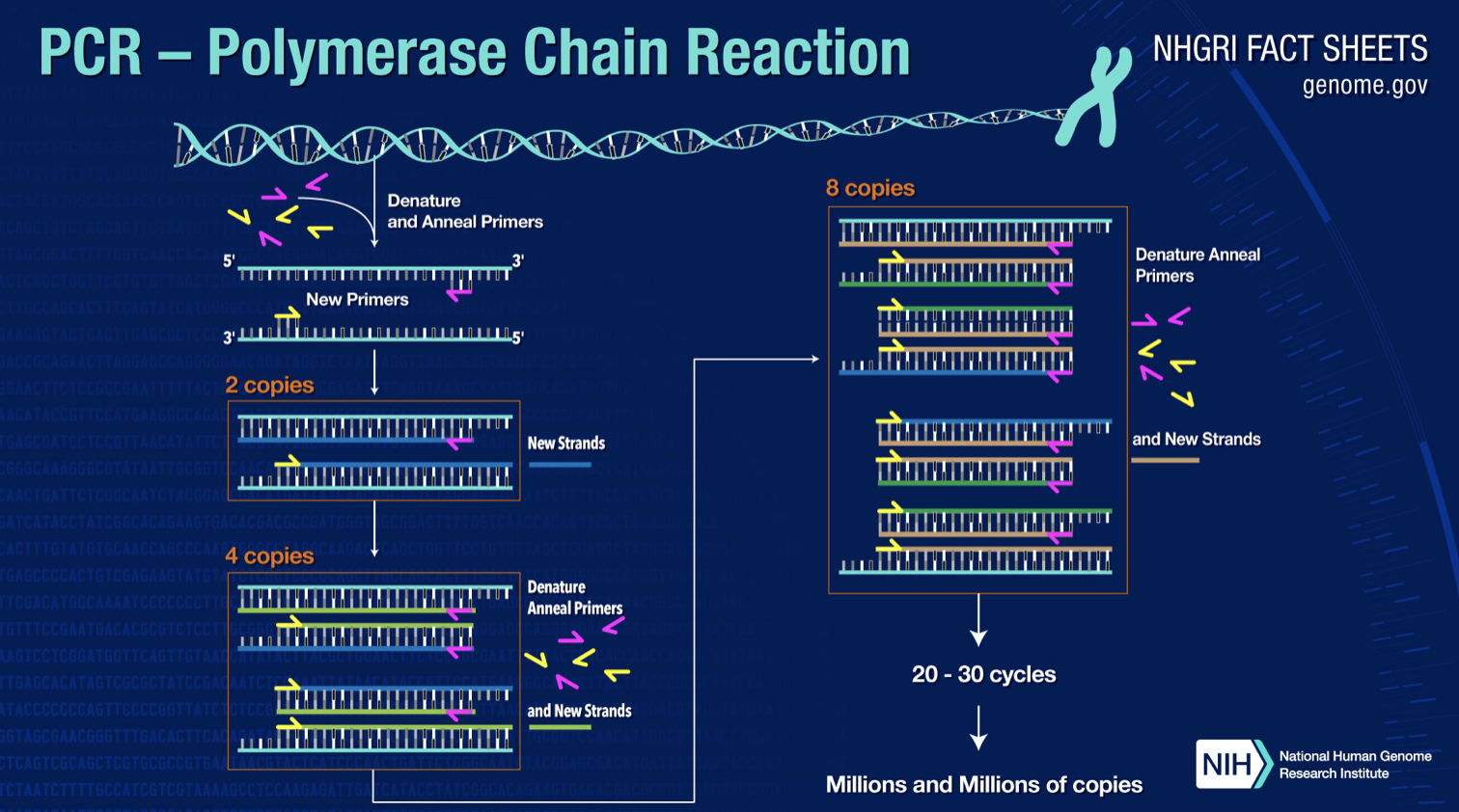 Types of Vaccines….
“The final two vaccine candidates (from Moderna and BioNTech/Fosun Pharma/Pfizer) are mRNA vaccines. What are those?
First it helps to remember that DNA is the gene and RNA gives instructions for certain proteins. So an mRNA vaccine is the instructions for the SARS-CoV2 protein. Once inside the cell, the protein is made and that triggers the immune response. Just like the vector vaccines which use viruses to deliver the protein instructions, here you are delivering the instructions alone. It’s another way of getting the protein made inside of you.
Is there any risk of getting COVID-19 or COVID-19-like side effects from these vaccines?
When people talk about side effects of a vaccine, people often believe you’re getting a weaker version of the virus and a minor version of the disease. That is not what these things do. Most vaccine side effects — which include anything from a sore arm, to feeling warm to muscle aches — are a sign of the immune response. It’s not that you get a mild form of the disease. That’s important to be clear about. People keep a very close eye because you want to make sure these vaccines are safe.”
https://labblog.uofmhealth.org/rounds/top-5-covid-19-vaccine-candidates-explained
Types of Vaccines….
“The final two vaccine candidates (from Moderna and BioNTech/Fosun Pharma/Pfizer) are mRNA vaccines. What are those?
First it helps to remember that DNA is the gene and RNA gives instructions for certain proteins. So an mRNA vaccine is the instructions for the SARS-CoV2 protein. Once inside the cell, the protein is made and that triggers the immune response. Just like the vector vaccines which use viruses to deliver the protein instructions, here you are delivering the instructions alone. It’s another way of getting the protein made inside of you.
Is there any risk of getting COVID-19 or COVID-19-like side effects from these vaccines?
When people talk about side effects of a vaccine, people often believe you’re getting a weaker version of the virus and a minor version of the disease. That is not what these things do. Most vaccine side effects — which include anything from a sore arm, to feeling warm to muscle aches — are a sign of the immune response. It’s not that you get a mild form of the disease. That’s important to be clear about. People keep a very close eye because you want to make sure these vaccines are safe.”
https://labblog.uofmhealth.org/rounds/top-5-covid-19-vaccine-candidates-explained
Vitamin D and COVID 19
June 13, 2020 4:40 pm
There has been extensive discussion on the importance of Vitamin D published over the last few years in regards to bone health, immune health and Calcium physiology. The importance of vitmain D and bone structure has been discussed extensively. It is also important in the absorption of Calcium. It further plays role in immune modulation.
What is new is the possible correlation of Vitamin D and COVID 19. Recently it is been shown that low vitamin D may increase the risk of a poor outcome with Covid-19 exposure and infection.
There are different standard recommendation for the Vitamin D levels.
In our practice we aim to maintain a Vitamin D level of 0ver 60 in post weight loss surgical patients.
There are a number of theories as to how the Vitamin D deficiency may play a role in this. An emerging observation is that low Vitamin D may cause abnormal and excessive blood clot formation. Mohammad et. al. in 2019 published a study on the association of low vitamin D and “…Pathogenesis of Thrombosis”
This pathologic blood clot formation in COVID-19 patients may explain the extensive lung injury and multi system organ failure in some patient. It is also one of the reason that some COVID-19 patients have loss limbs or appendages.
Please follow all supplement recommendations based on your laboratory studies and all COVID-19 recommendations. We would recommend frequent hand washing, surface cleaning, social distancing, and wearing face masks as the most basic precautions and increase precautions based on your health status.
Vitamin D and Covid -19
May 07, 2020 9:24 am
We are all aware of the many roles that Vitamin D plays in our bodies. This includes immune function in addition to all the regulatory roles that Vitamin D plays in several physiologic reactions. There may be a correlation of low Vitamin D and COVID-19 infection increasing death risk as looked at in research articles.
Covid -19 in a subset of patience causes significant lung injury. These patients require mechanical ventilation.
Previously reported publications have suggested a possible correlation between ace inhibitors and increased risk of pulmonary complications of Covid -19. Some researchers suspect that the Covid-19 may be able to enter lung cells by the ACE receptors.
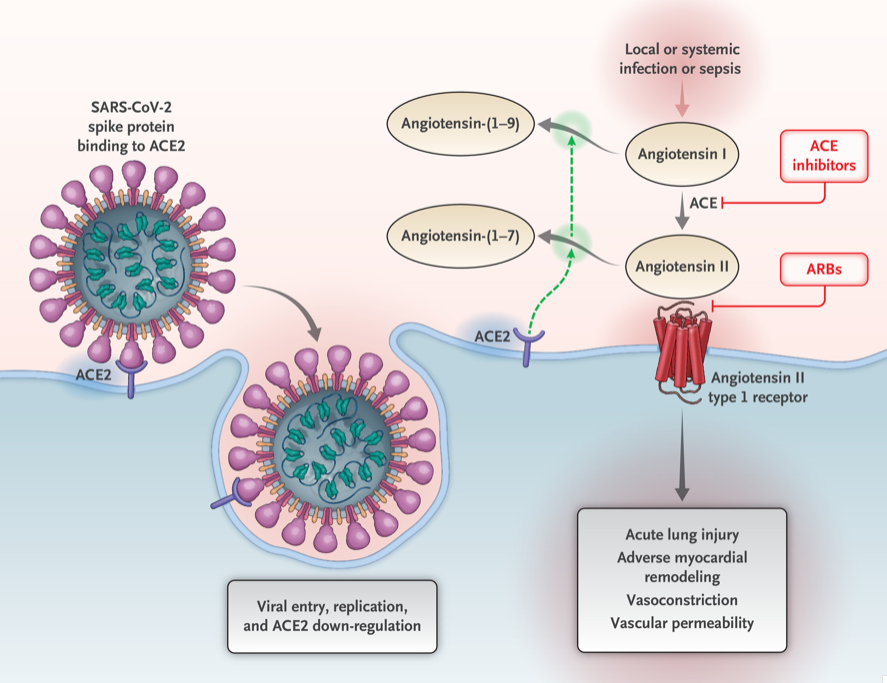
Vitamin D may positively implact the receptor ACE2. This study, report clear correlation between the high death rate with low vitamin D levels in Covid infected patients. There are limitation to this study that the attached abstract outlines.
Our take home message would be to please make sure you have updated labs and that you are all taking the recommended Vitamin D based on your surgical anatomy and laboratory values, not just an average non-bariatric person recommended dose.
https://www.dssurgery.com/wp-content/uploads/2020/05/manuscript.pdf
Why Oxygenation in Covid-19 is a major problem
April 21, 2020 7:27 am
Covid-19 is a respiratory virus. The majority of patient may experience no or minimal symptoms. But small subset of those infected will unfortunately progress to have significant pulmonary dysfunction. Some will even require mechanical ventilation. Oxygenation in COVID 19 patients with severe symptoms is altered. This is the due to the changes caused by the virus.
Normal Physiology
Oxygen (O2) is exchanged with Carbon Dioxide(CO2) in the lungs. The CO2 is exhaled and the O2 is taken up by the blood. This high O2 continuing blood is then pumped to every single organ. With complete distribution network of capillary vessels, every cell then gets access to the O2 rich blood. Hemoglobin is the carrier that transports the O2.
The O2 is removed and dissociated from the Hgb depends on a number of variables. Each red cell Hgb has four binding site for the oxygen. The affinity and strength of each one of those four units for oxygen changes based on a number variables. These are CO2, Acidity (PH), DPG and temperature.
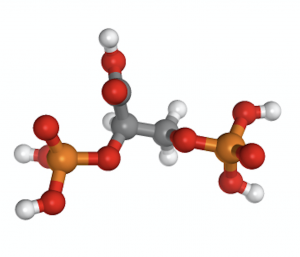
Oxygen Dissociation Curve
The oxygen dissociation curve has a long “S” shape. On the low end of oxygen in the blood most of the Hgb site are occupied. As the oxygent level increase there is little change to the saturation.
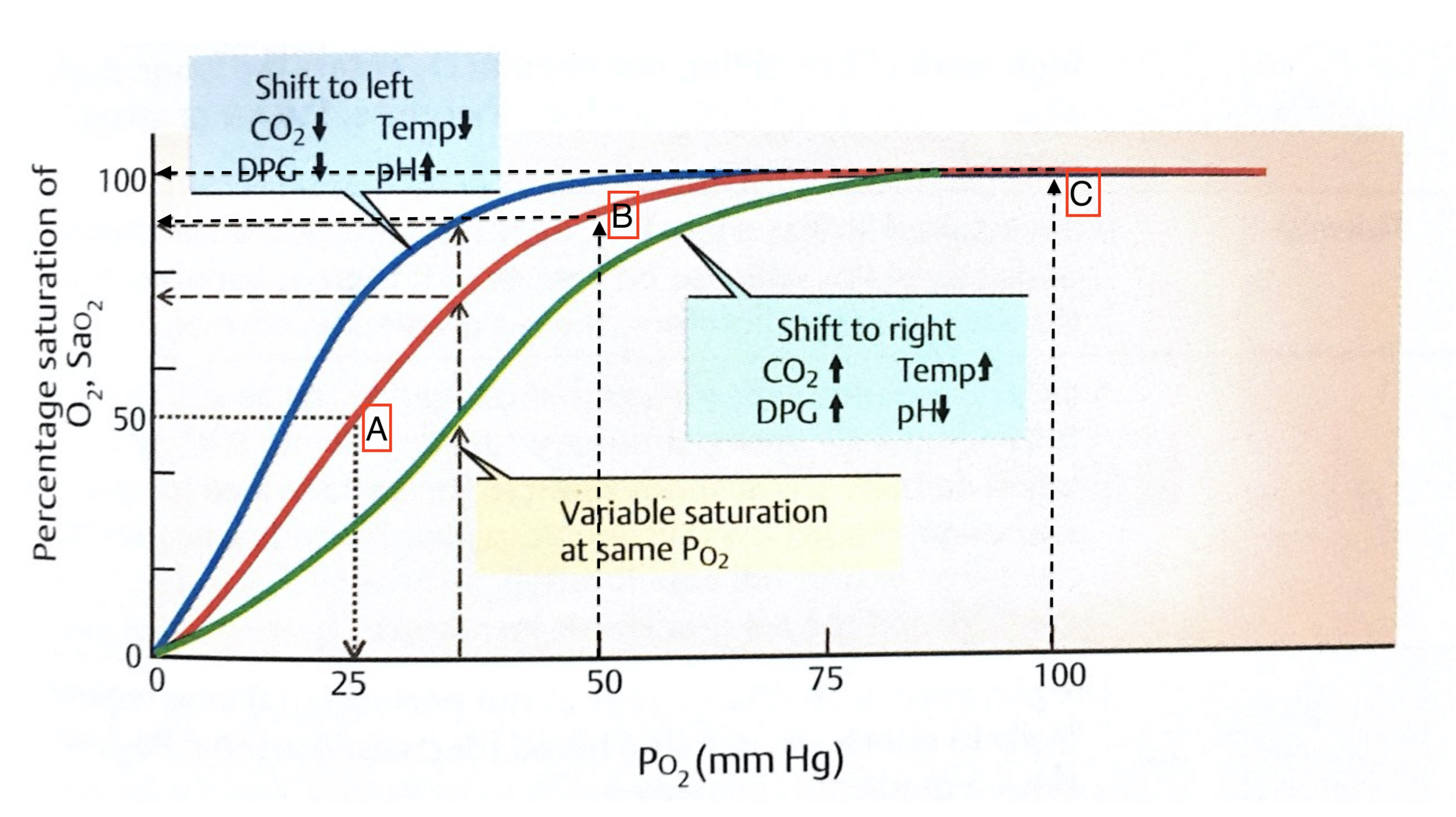
Normally the relationship of the blood in the lungs (horizontal axis) and the amount of the O2 in the red cell (vertical axis) is following the red line. When the amout of oxygen insired is 25mmhg the blood saturation is at 50% (A). The blood saturation is nearly 100% when room air is inhaled (C). Room air has PO2 of 75mmHg. Note that there is very little change in blood saturation (SaO2) by increasing the PO2 from 75 to 100 mmHg (the red line is horizontal between 75-100).
Another way to look at this: If you increase the PO2 from 25 to 50 (doubling) the Saturation goes from 50 (A) to nearly 85(B). Whereas increaseing the PO2 from 50 to 100 (doubling) only mober the Saturation from 85(B) to 100(C). This shows the efficiancy of system to be able to deliver the most amout of oxygen to the tissue even with the low level of oxygen present in the lungs.
As the Green and the Blue lines demosntrate the balance can change by changes in CO2, Acidity (PH), DPG and temperature.
COVID-19
When it comes to COVID-19 illness there may be a number of factors in play. Most patients with pre-existing conditions already have changes that may shift the curve to the right (high fever and high Co2). Furthermore, obesity, asthma and other conditions may decrease the ability to clear the lungs of secretions and mucus may contribute to decreased oxygenation. Additionally, there is significant inflammation associated with the chemicals released in COVID-19 (cytokines). These can cause devastating changes to the ability to exchange oxygen in the lungs.
Oxygenation in COVID-19 severely symptomatic patient can deprive oxygen from organ. This can progress to organ failure. One of the most common organ systems to fail is the kidneys which may require dialysis.
Stop The Spread of COVID-19
March 22, 2020 3:18 pm
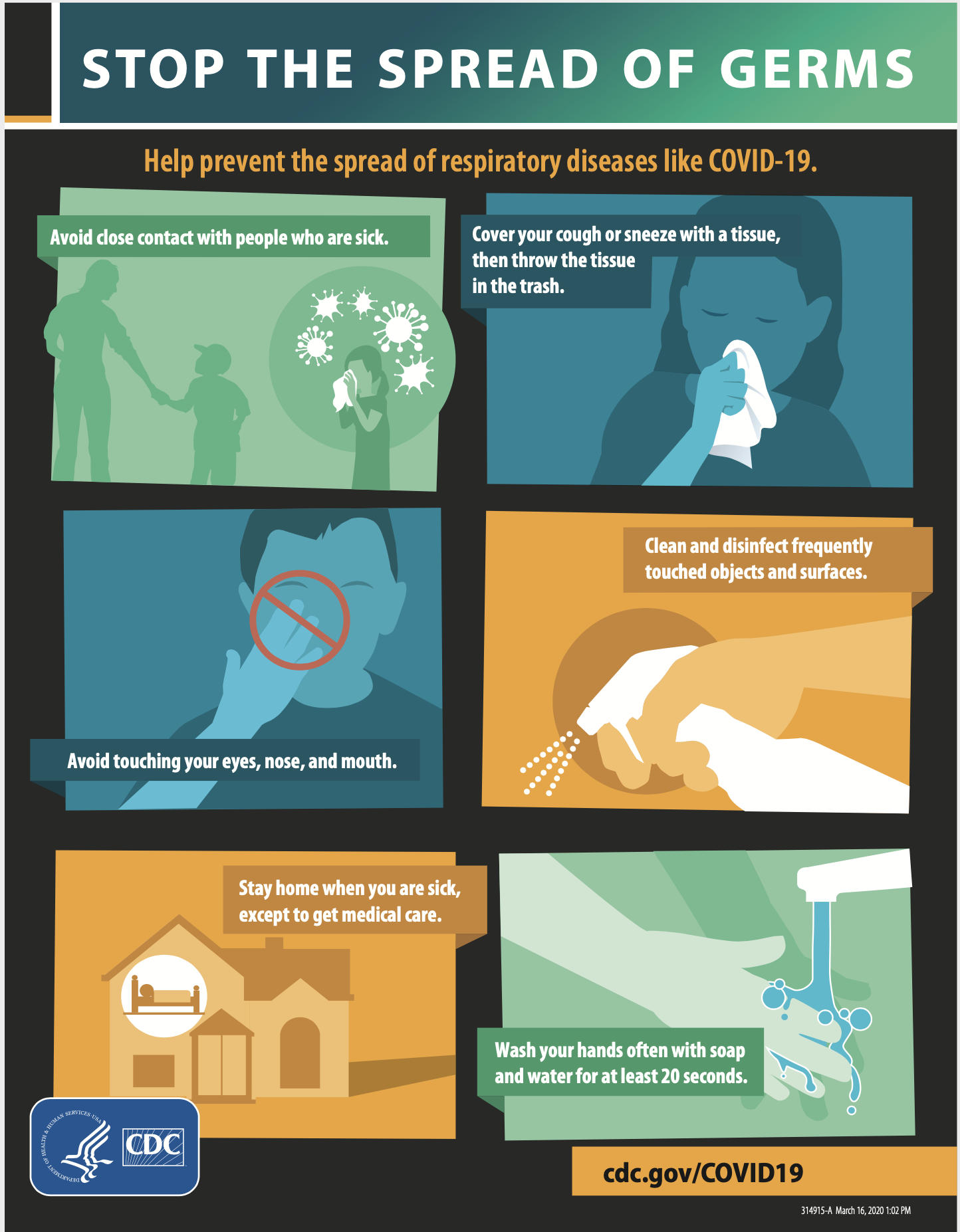 Using the basic precuations can help us content the spread thereby shorten the overall corse of the pandemic.
Using the basic precuations can help us content the spread thereby shorten the overall corse of the pandemic.
Symptoms of Coronavirus Disease 2019
March 22, 2020 3:09 pm
Some of the common symptoms of Coronavirus disease 2019 infection may range from mild “Flu” symptoms to shortness of breath and high fever. Please check CDC.gov for frequently updated information.
